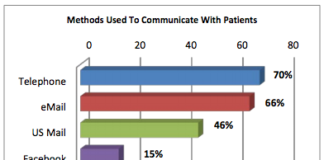Pharmaceutical trade publications like MedAdNews, MM&M, DTC Perspectives, Product Management Today, and Pharmaceutical Executive Magazine, are the industry’s biggest cheerleaders.
Is that a good thing or a bad thing? Does it have to be that way? Or do their advertisers buy “words” as well as “space” and prevent any criticism, even constructive criticism?
You may have seen the latest issue of the Pharma Blogs: Week in Review email newsletter written by Christiane Truelove, editor at MedAdNews (subscribe here). In it, Truelove devoted some space to the topic of editorial vs. advertising practices of medical journals like JAMA — an issue I first raised in my post “Pimp My Doc!“
Here’s what Truelove had to say on the subject:
The Wall Street Journal Health Blog’s Jacob Goldstein has posted an interview with Catherine DeAngelis, editor of the Journal of the American Medical Association: “‘No doctor should be on a speakers bureau — none, zero,’ DeAngelis said yesterday when she came by Health Blog HQ for a chat. Just in case we didn’t get the message, she added that she once said to a doctor who dodged a tough question during an industry-funded speech, ‘Do you understand what prostituting yourself is? That’s what you just did.'”
Mr. Goldstein writes, “How does DeAngelis reconcile her tough stance on drug information with the pharmaceutical ads that fill JAMA? She notes that ads don’t run in the section of the journal where research studies appear, and says she routinely bars ads that she deems misleading: ‘A couple weeks ago, the ad people came down and said, ‘You know, you’ve cost us $750,000 this year because you’ve turned down ads.’ I said, ‘Is that all?'”
The latter statement was highlighted by John Mack of the Pharma Marketing Blog, who took the opportunity to illustrate the story in his own unique way. “This leads me to ask, how much money does JAMA and other medical journals make from pharma advertising if Catherine can shrug off $750,000 per offhand remark?” Mr. Mack says. “At what point does it become Kettle, Pot, calling each other black?”
It’s nice to be quoted by Truelove, but what I really want to focus on is Truelove’s own opinion on the subject, which she thankfully includes in her article:
I do wonder the same thing myself, yet as a trade magazine editor, I empathize with Dr. DeAngelis. In the final analysis, however, when it comes to advertisers, we should all be guided by Betsy Throckmorton, the newspaper editor in the journalistic novel Fast Copy: “They buy our space. They do not buy our words.”
This last statement of editorial principle got me to think further about pharmaceutical trade publications like MedAdNews, MM&M, DTC Perspectives, Product Management Today, and Pharmaceutical Executive Magazine, all of which are confronted with the same “church vs. state” issues faced by medical publications like JAMA. All these publications accept advertising from pharmaceutical companies, ad agencies, and vendors that work for the industry.
In a previous post (“The Drug Industry Needs Constructive Criticism, Not Pugilistic Put Downs“), I suggested that these great industry trade publications lacked constructive criticism:
“These great publications are highly esteemed by industry insiders and often read cover to cover. They have great reach within the industry and among the very top leadership of big pharma companies. It’s a shame they tend to repeat conventional wisdom and stick to the industry’s PR playbook.”
Rich Myer over at The World of DTC Marketing also has the same criticism, at least with regard to DTC Perspectives:
“Ahhh yes. That time of year when the DTC Perspectives issue arrives with the “Top 25 DTC Marketers” which surely has to be an oxymoron. This trade magazine is such a joke that nobody in the industry really takes it seriously. It’s news is shallow and outdated and, judging from the list of the top 25 marketers, its selection criteria is based more upon relationships within the industry than what anyone has actually done, or has not done.” (See “DTC National Awards = worthless“).
Trade publications, whose mission is to promote the drug industry, survive on advertising. Does that mean, however, that they must ONLY publish “rah rah” stories about the industry, praise and bestow honors on advertisers, and NOT offer any constructive criticism at all?
I don’t think so.
I also publish a trade publication called Pharma Marketing News, which many of you may subscribe to. It is supported 100% by advertising. It includes articles that feature the products and services of advertisers, but the majority of articles cover important issues from my independent perspective or from the perspective of contributing authors.
It is my premise that pharmaceutical executives appreciate different points of view about issues they face and how the industry runs its business. How else would you explain that 41% of the readers of this blog — which was rated “Critical of the Industry” by most readers — is employed by the pharmaceutical industry and 65% are very or somewhat supportive of the industry?
Instead of cheerleaders, what pharmaceutical people need are ideas! And the best ideas may come from outsiders. As I said before, trade publications might better serve their subscribers if they included at least a few inches of space to outside critics.
Until then, drug industry trade publications are not addressing a great unmet need of their readers. To which I say, thank you very much!









![6 Digital Tools at the Center of Healthcare Digitalization [INFOGRAPHIC]](http://ec2-54-175-84-28.compute-1.amazonaws.com/pharma-mkting.com/wp-content/uploads/2021/04/6DigitalTools_600px-100x70.jpg)




